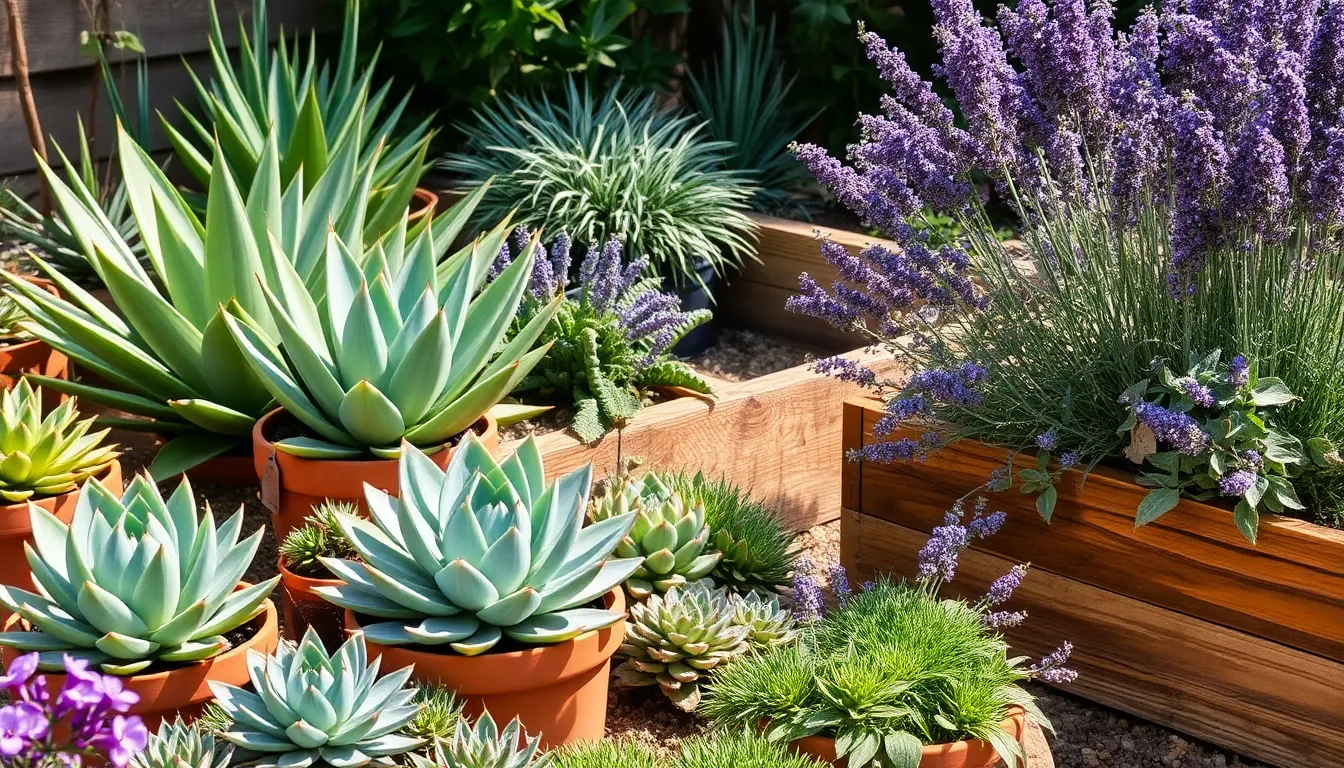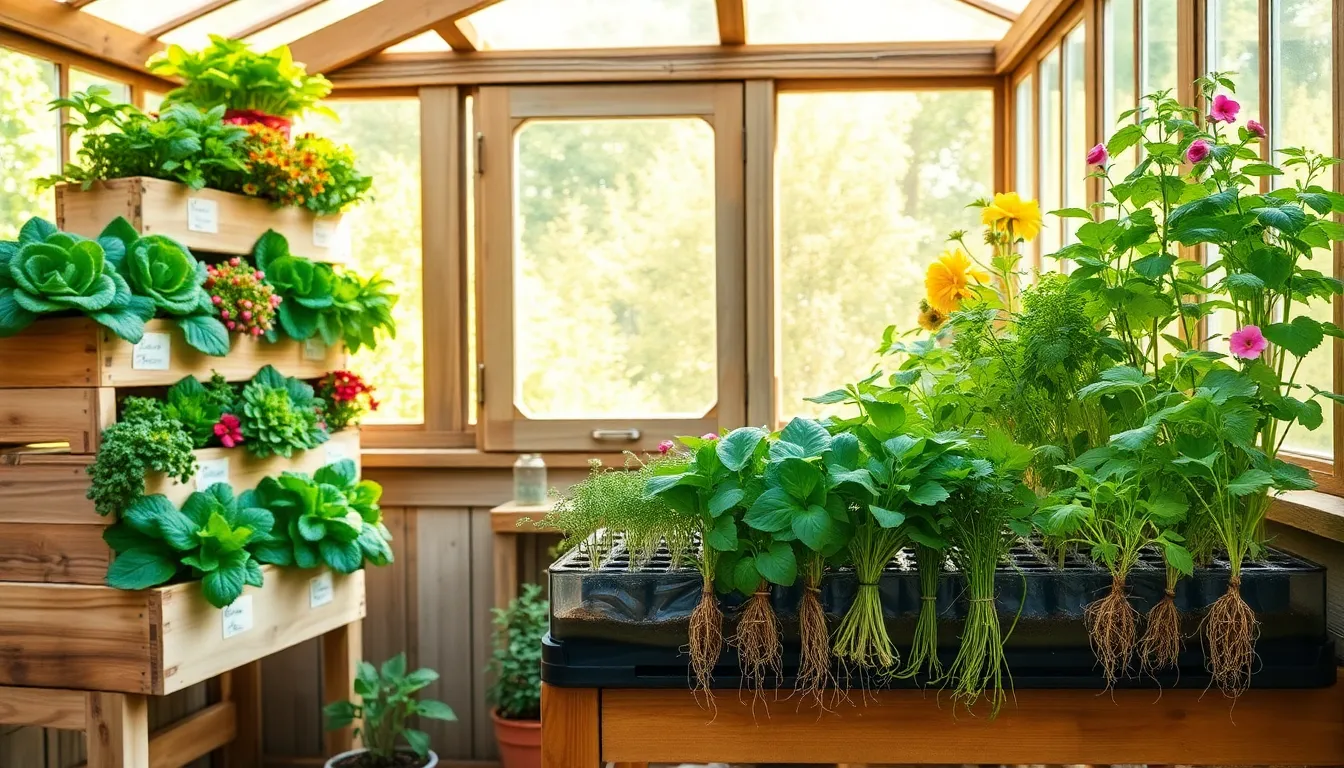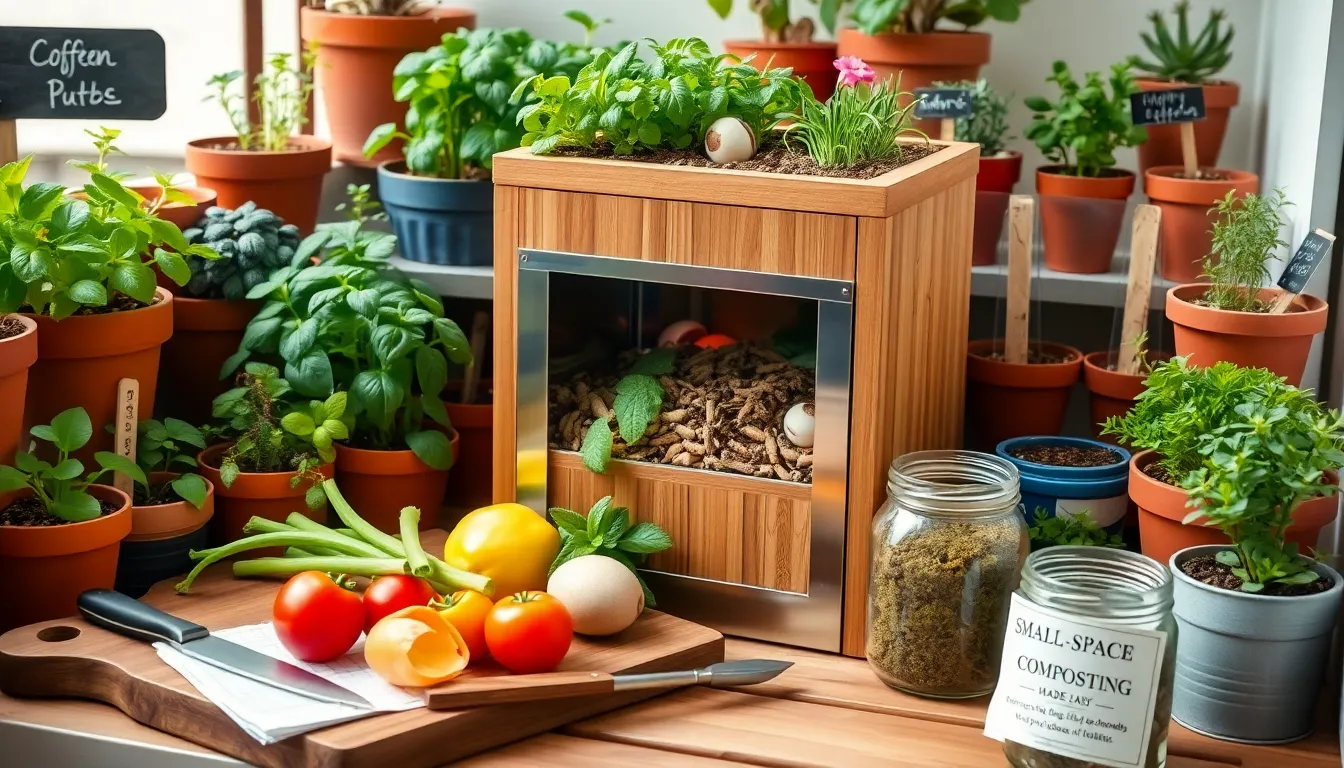Welcome to the delightful world of low-water organic gardening, where lush growth and sustainability unite in perfect harmony. Whether you’re a beginner just dipping your toes into the soil or a seasoned gardener with years of experience, these ten tips will transform your garden into a thriving oasis, all while conserving water and nurturing the earth.
In this guide, you’ll discover practical techniques that bring out the best in your garden, even in the face of water restrictions or arid environments. Each tip is designed to boost your confidence, ensuring you reap the rewards of bountiful harvests and vibrant blooms with minimal water usage.
Imagine the joy of stepping into your garden, flourishing with life, knowing that your green space is both environmentally friendly and effortlessly beautiful. With these strategies in hand, you’ll not only enhance your garden’s resilience but also experience the profound satisfaction of successful, sustainable gardening.
Choose Drought-Tolerant Plant Varieties

Choosing drought-tolerant plant varieties is a smart strategy for conserving water in your garden. These plants are adapted to thrive with less moisture, making them ideal for areas with limited rainfall or water restrictions.
Consider incorporating native plants into your garden, as they are naturally suited to the local climate and soil conditions. Native species often require less water and maintenance, providing a beautiful and sustainable landscape option.
For beginners, start with hardy options like lavender, yarrow, or sedum, which are well-known for their drought resistance. These plants not only survive dry spells but also add vibrant color and texture to your garden with minimal effort.
Experienced gardeners might explore xeriscaping techniques, which involve grouping plants with similar water needs to maximize efficiency. By using mulch and soil amendments to retain moisture, you can enhance the drought tolerance of your selected plant varieties.
When planting, ensure you use well-draining soil to prevent root rot, a common issue in drought-tolerant gardening. Water deeply but infrequently to encourage deep root growth, which helps plants access moisture during dry periods.
Implement Drip Irrigation Systems
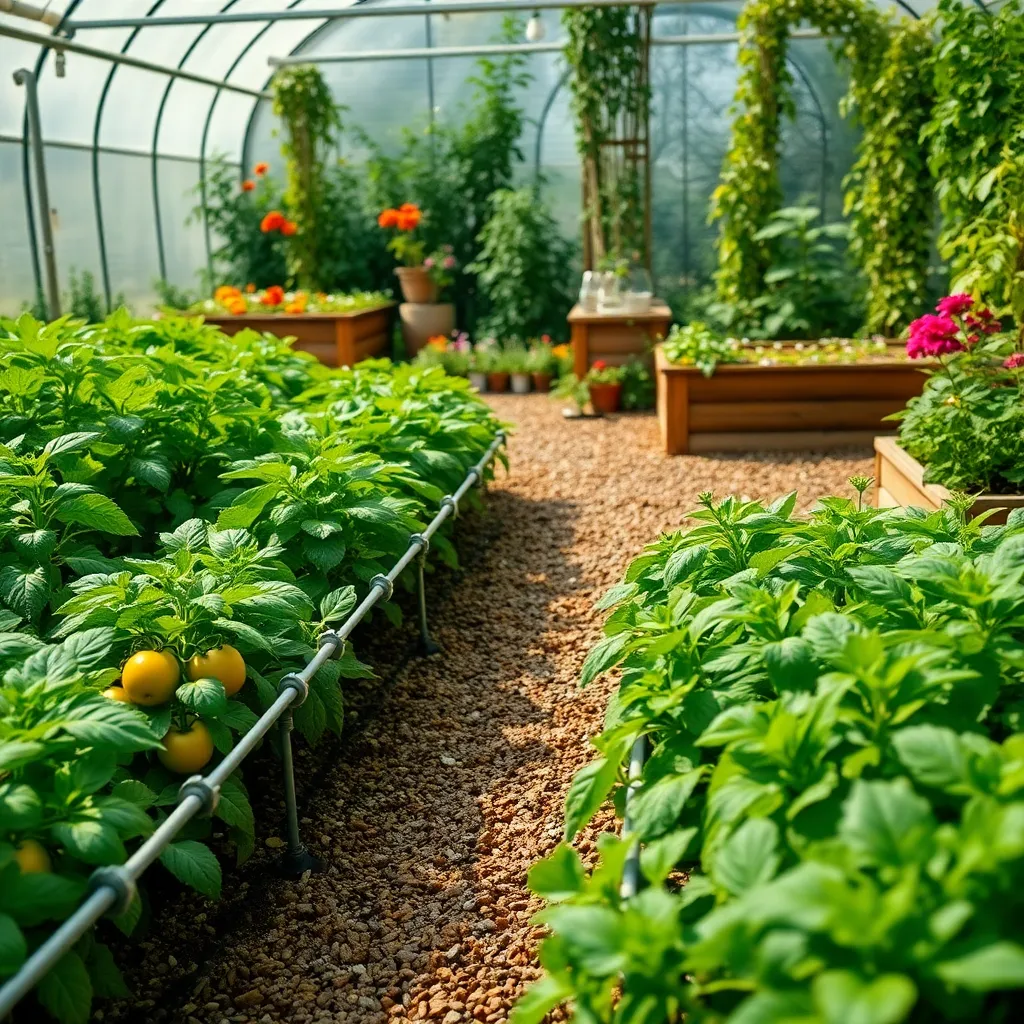
Drip irrigation systems offer a highly efficient way to water your garden while conserving precious water resources. By delivering water directly to the plant roots, these systems minimize evaporation and reduce water waste, making them ideal for organic gardens focused on sustainability.
To get started, consider installing a simple drip irrigation kit, which can be found at most garden centers. These kits typically include everything you need, such as tubing, emitters, and connectors, making them perfect for beginners looking to set up their first system.
When placing your emitters, aim to position them near the base of each plant to ensure water directly reaches the roots. For established plants, use a couple of emitters to cover a wider root zone, which will help in promoting even growth and plant health.
To further optimize your system, consider incorporating a timer to regulate watering frequency and duration. For most gardens, setting the timer to water early in the morning helps reduce evaporation and ensures plants have moisture throughout the day, a practice that is beneficial in both conserving water and promoting plant vitality.
Apply Organic Mulch Generously
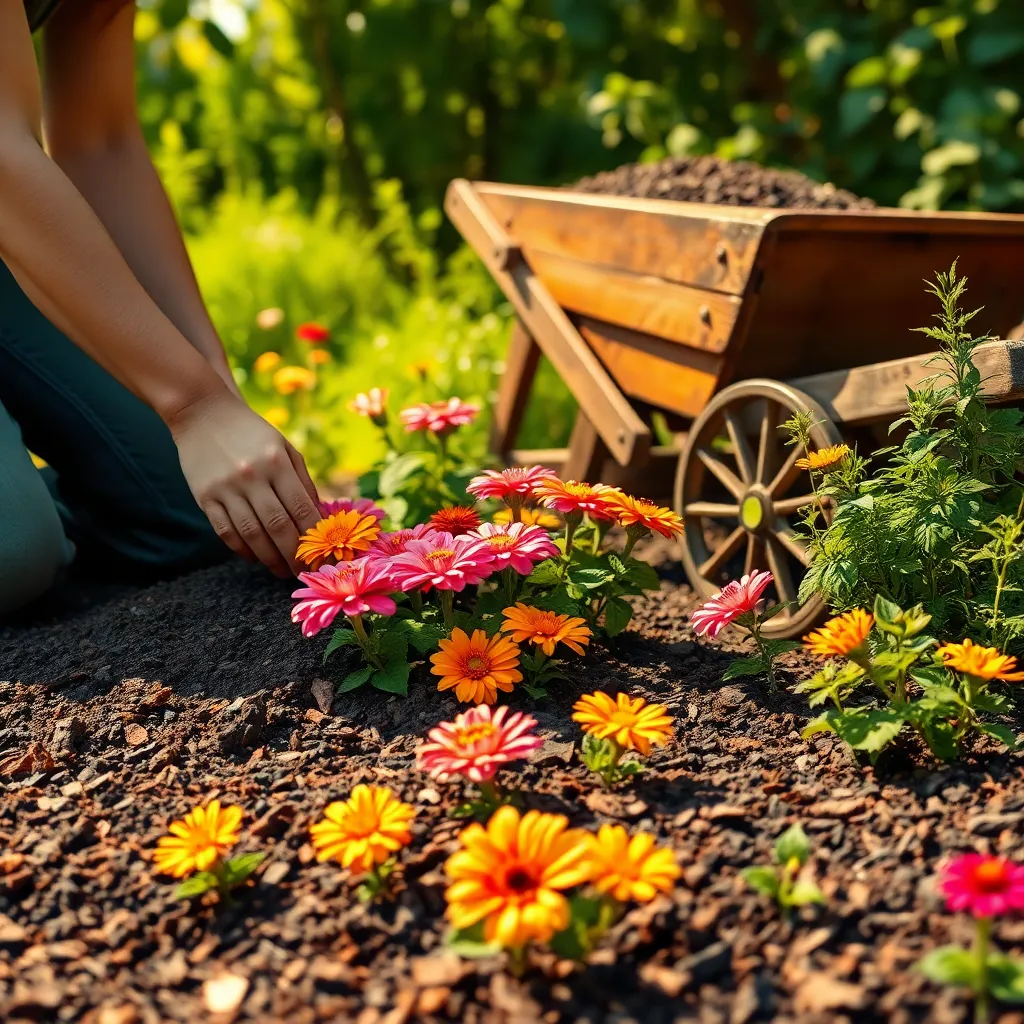
Applying organic mulch generously is a smart strategy for conserving water in your garden. Mulch helps to retain soil moisture by reducing evaporation, which is crucial for low-water gardening.
A variety of organic materials can be used as mulch, including shredded leaves, straw, and wood chips. When selecting mulch, choose materials that will break down over time to enrich the soil with nutrients.
Spread a layer of mulch about 2-3 inches thick around your plants, ensuring it does not touch the plant stems to prevent rot. This thickness is optimal for suppressing weeds, which compete with your plants for water.
For gardeners looking to enhance soil quality, consider using compost as a mulch. Compost not only conserves moisture but also provides a slow-release of nutrients as it breaks down, fostering healthier plant growth.
Harvest Rainwater for Irrigation
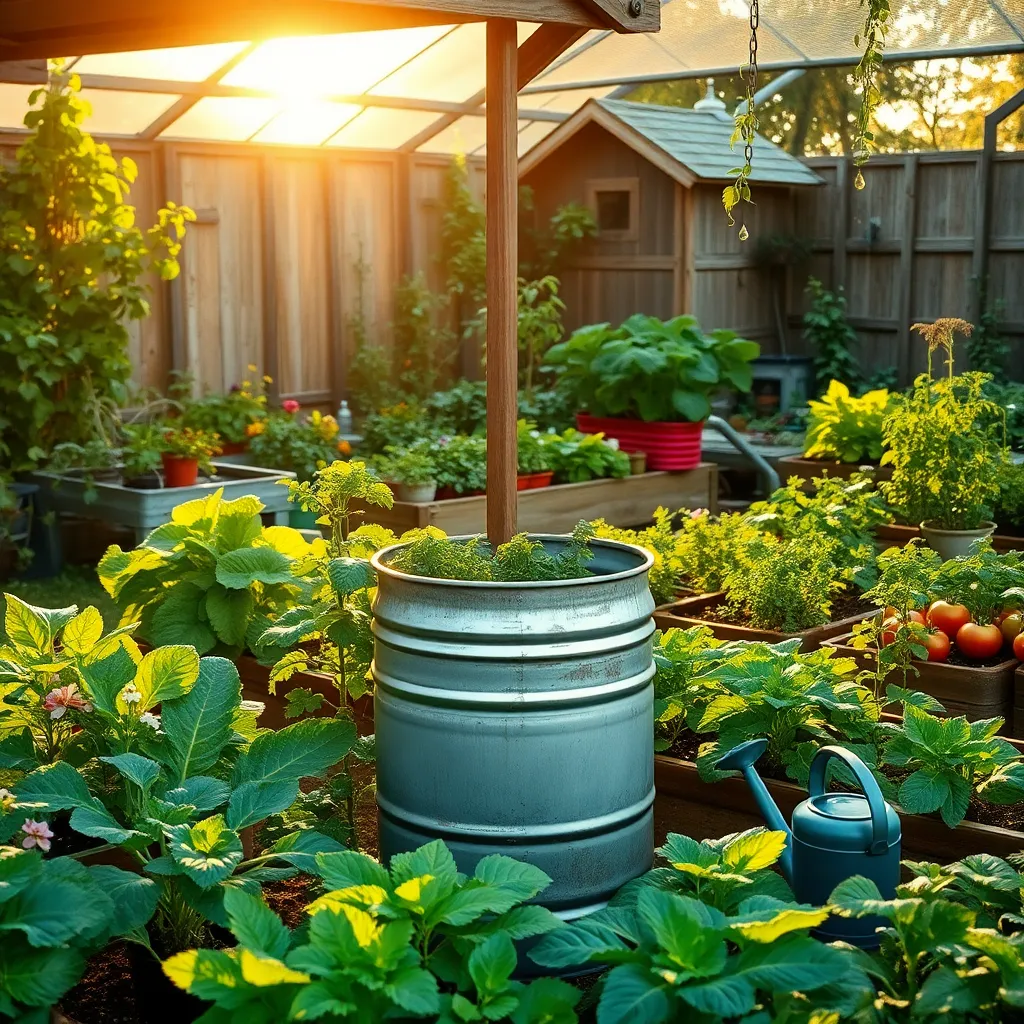
Harvesting rainwater for irrigation is a sustainable method to conserve water and reduce your garden’s environmental footprint. Begin by setting up a rain barrel under a downspout to collect runoff from your roof, which provides a free and ample water source for your plants.
Consider using a filtration system to keep debris out of the collected water, ensuring it remains usable and clean. A fine mesh screen works well to prevent leaves and insects from contaminating your water supply, keeping it fresh for your garden’s needs.
For beginners, a simple method is to use a watering can to distribute the rainwater directly to your plants. This hands-on approach gives you control over the amount of water each plant receives, helping to avoid over-watering.
Advanced gardeners might set up a drip irrigation system connected to the rain barrel, delivering water directly to the roots of plants. This method maximizes efficiency and minimizes water waste, ensuring each plant gets the precise amount of moisture it needs.
Reduce Lawn Size Strategically
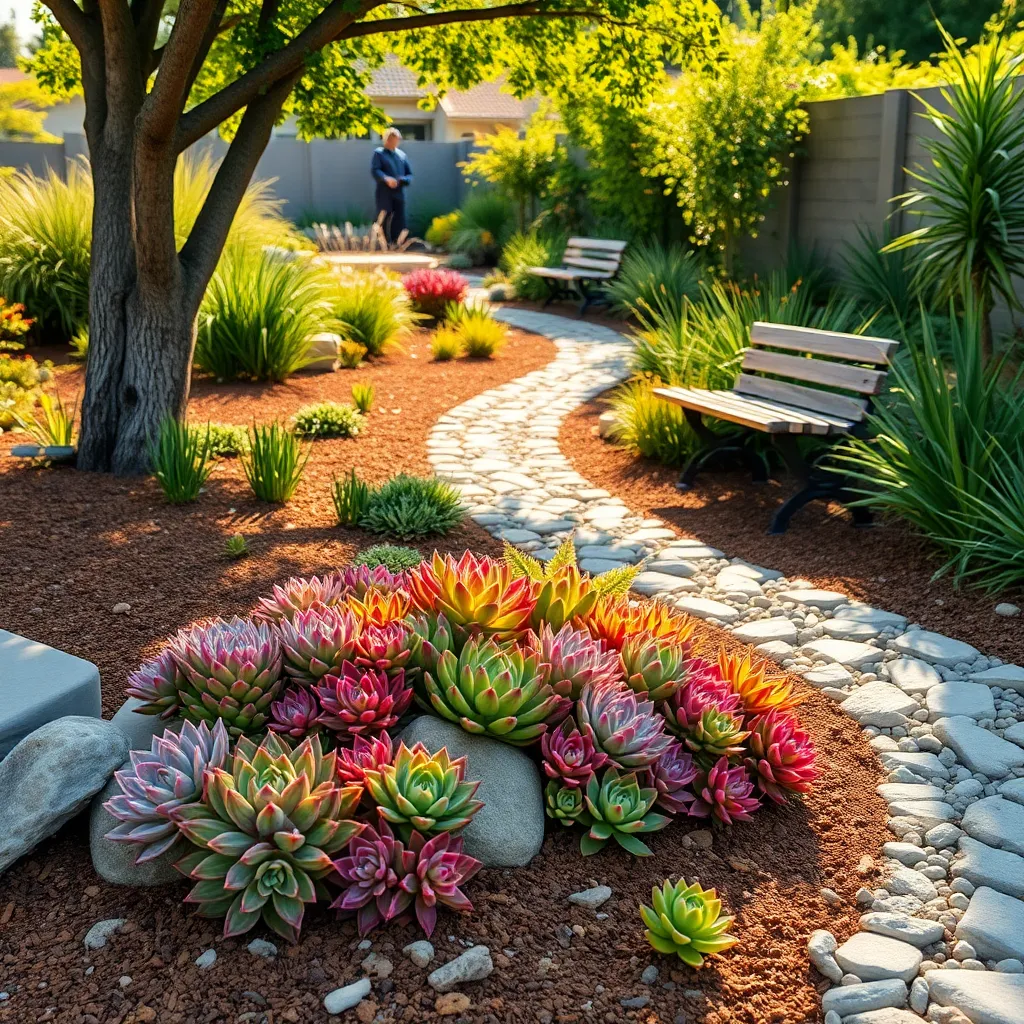
Transforming part of your lawn into garden space can significantly reduce water usage. Start by identifying areas of your lawn that receive excessive sun exposure or have compacted soil, as these spots are ideal for converting into garden beds.
Consider planting native or drought-tolerant plants in these new garden spaces. Native plants require less water and maintenance once established, making them an excellent choice for sustainable gardening.
To prepare the soil for planting, remove grass by manually digging or using a sod cutter. Improve soil quality by adding organic matter such as compost, which enhances water retention and provides nutrients for your plants.
Incorporating mulch in your new garden areas can also help conserve moisture and suppress weeds. Use materials like bark chips or straw to create a protective layer that keeps the soil cool and reduces evaporation.
Utilize Greywater for Watering
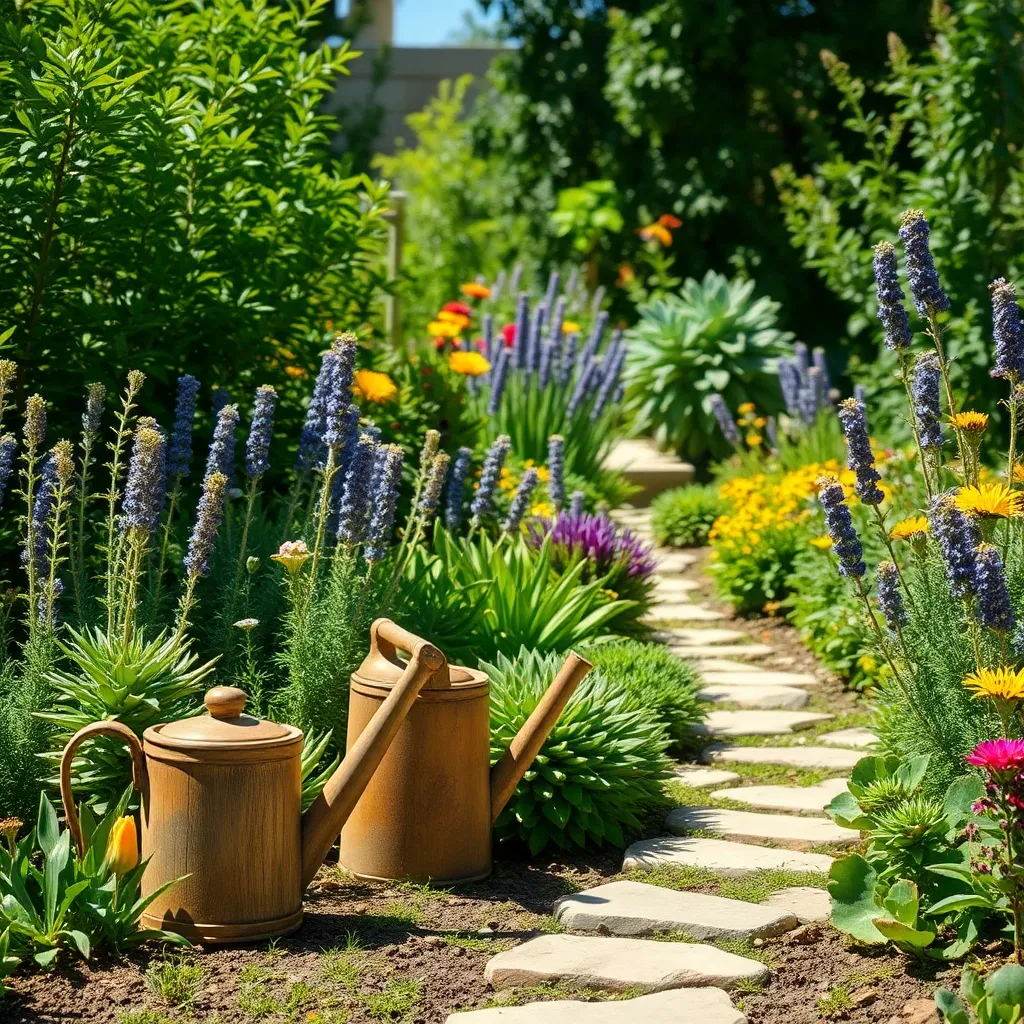
Greywater is a sustainable resource that can be harnessed to keep your garden hydrated while conserving freshwater. It typically originates from household sources like sinks, showers, and washing machines, but needs to be applied carefully to ensure plant health.
Before using greywater, ensure it is free from harsh chemicals that can harm plants. Opt for eco-friendly soaps and detergents, which break down more easily and are safer for garden use.
To start using greywater effectively, focus on plants like fruit trees, shrubs, and ornamental plants that can thrive with this resource. Avoid using greywater on edible crops like lettuce or root vegetables, as they might absorb harmful residues.
For an optimal setup, consider installing a greywater system that directs water safely to designated areas of your garden. This can be a simple DIY project or a more advanced plumbing solution, depending on your needs and budget.
Group Plants with Similar Needs

Grouping plants with similar needs is a highly effective way to conserve water in your garden. When plants with the same water and sunlight requirements are placed together, it ensures that each one thrives without overuse of resources.
For example, consider planting succulents, like Sedum and Echeveria, together as they all prefer well-draining soil and minimal watering. Additionally, herbs such as rosemary and thyme thrive in similar dry conditions, making them perfect companions.
It’s essential to assess the microclimates within your garden, such as shaded versus sunny spots, to best match your plant groupings. This approach not only conserves water but also reduces the potential for plant diseases, as you’ll avoid overwatering drought-tolerant species.
For advanced gardeners, implementing a drip irrigation system tailored to each plant group can further enhance water efficiency. This method delivers water directly to the root zone, minimizing evaporation and ensuring that each plant receives the appropriate amount of moisture.
Incorporate Compost to Retain Moisture
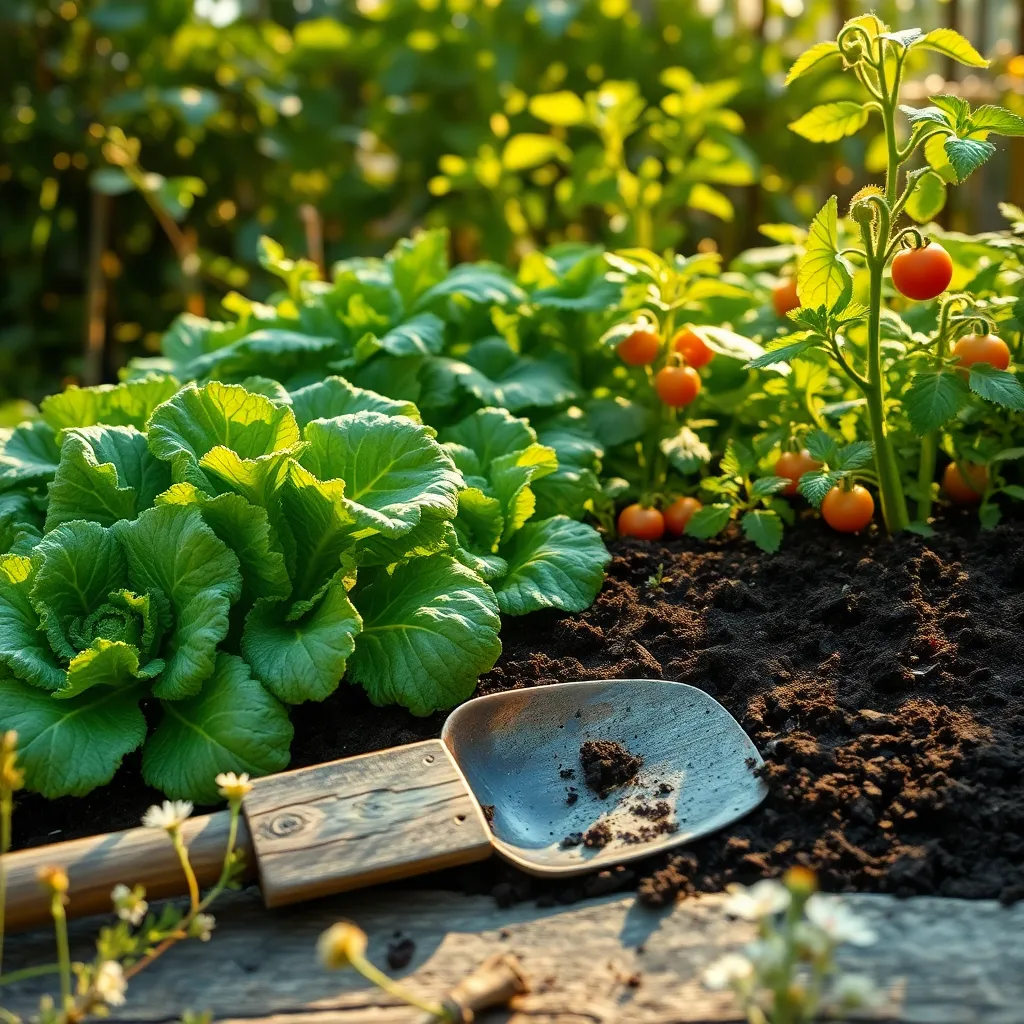
Incorporating compost into your garden soil is an effective way to retain moisture, which is crucial for low-water gardening. Compost improves soil structure, allowing it to hold more water and nutrients for your plants.
To start, mix a generous amount of compost into the top few inches of your garden soil. This practice not only enhances moisture retention but also enriches the soil with essential nutrients, promoting healthier plant growth.
For the best results, apply a layer of compost in the fall to prepare your garden for the next growing season. This timing allows the compost to break down further over the winter, improving soil conditions by springtime.
Advanced gardeners might consider making their own compost to ensure a rich blend of organic matter. By using a variety of materials such as vegetable scraps, coffee grounds, and leaves, you can create a nutrient-dense compost that suits your garden’s specific needs.
Water Early to Minimize Evaporation
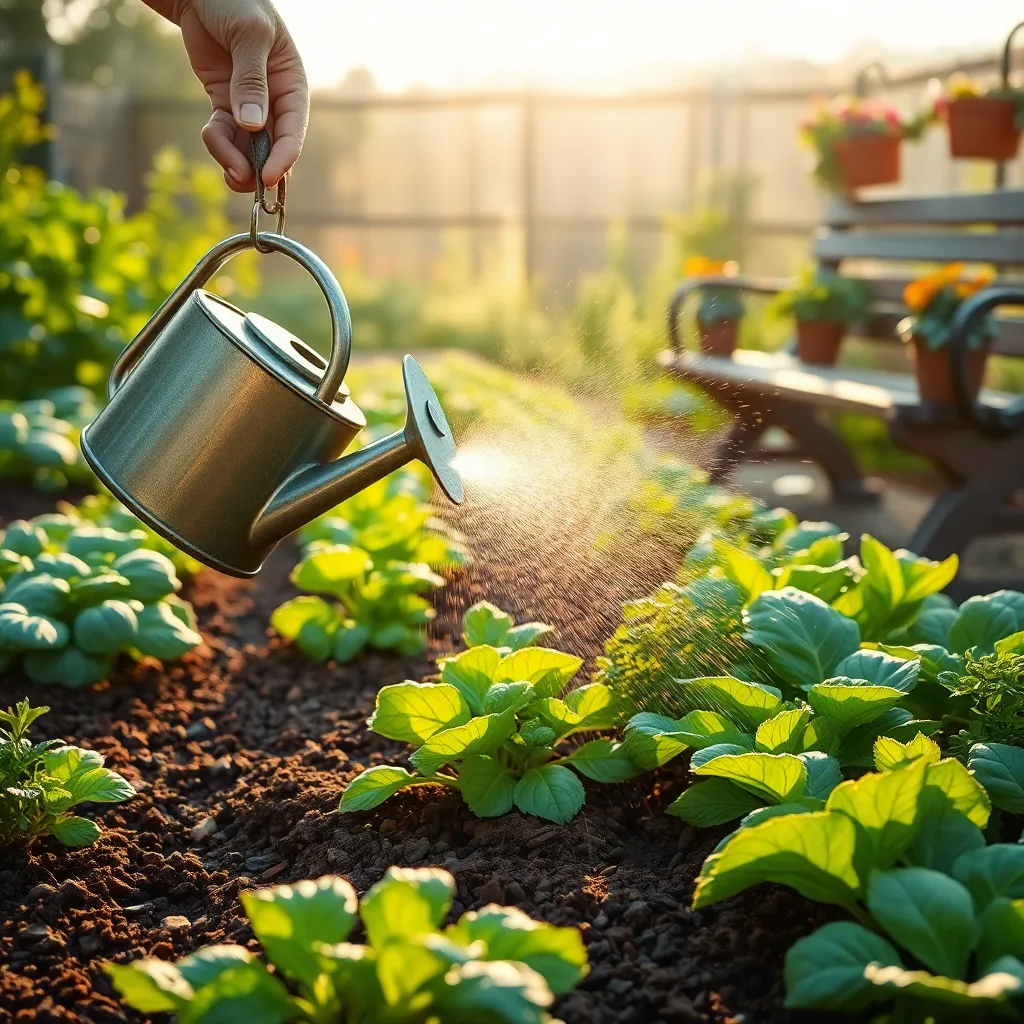
An effective way to conserve water in your garden is by watering early in the morning. This practice reduces evaporation, ensuring that more water reaches your plant roots where it’s needed most.
By watering in the morning, you allow the foliage to dry during the day, which helps prevent fungal diseases. This is particularly important for plants like tomatoes and roses, which are susceptible to mildew and blight.
For those with busy schedules, consider setting up a drip irrigation system with a timer. This not only optimizes water usage but also allows you to water deeply and consistently without manual effort.
In addition to early watering, ensure your garden soil is well-aerated to improve water absorption. Use a garden fork to gently loosen the soil around your plants, allowing water to penetrate more effectively and reach the roots.
Use Shade Cloth During Heatwaves
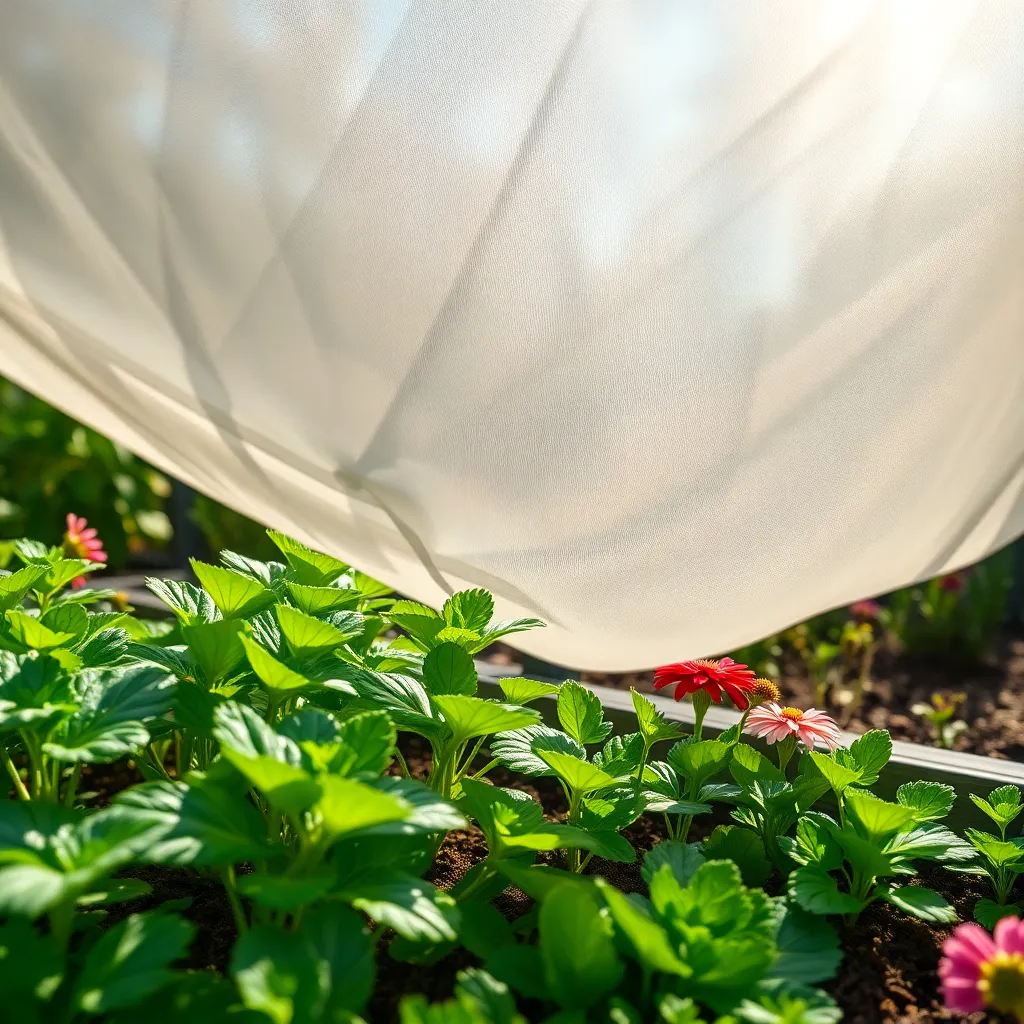
During heatwaves, using shade cloth can be a game-changer for your garden. Shade cloth helps protect plants from intense sunlight, reducing the risk of sunburn and heat stress.
To get started, choose a shade cloth with a density appropriate for your plants; typically, 30-50% shade is sufficient for vegetables and flowers. Install the cloth over plants using stakes or a simple frame, ensuring it is securely anchored and allows for airflow.
Not only does the shade cloth reduce sunlight exposure, but it also helps retain moisture in the soil by decreasing evaporation. This means you’ll need to water less frequently, which is crucial during water-scarce periods.
Advanced gardeners might use shade cloth selectively by adjusting its coverage throughout the day to optimize light exposure. This technique can be especially beneficial for heat-sensitive plants like lettuce or spinach, helping them thrive even in high temperatures.
Conclusion: Growing Success with These Plants
In “10 Low-Water Organic Gardening Tips,” we’ve explored key relationship concepts through the metaphor of nurturing a garden with limited resources. First, communication is like the soil—without it, nothing can grow. Trust acts as the mulch, protecting and sustaining the relationship. Patience and understanding are akin to drip irrigation, delivering consistent care in measured doses. Flexibility and adaptability, much like rotating crops, prevent stagnation. Celebrating small victories mirrors the joy of a blooming flower, while managing expectations serves as the trellis that supports growth. Prioritizing quality time, just like choosing the right seeds, ensures a bountiful future. Respecting boundaries parallels effective pest control, and self-care is the compost enriching the soil. Finally, gratitude is the sunlight essential for thriving relationships.
As an actionable next step, choose one concept to focus on this week. Whether it’s enhancing communication or prioritizing quality time, start small and watch your relationship blossom. Don’t forget to bookmark this article for future inspiration and reminders. By nurturing these elements, you set the stage for a flourishing, resilient partnership that withstands the test of time. Remember, every garden grows with love and care—your relationship can too. Save this guide, and let it be your roadmap to a thriving connection.

